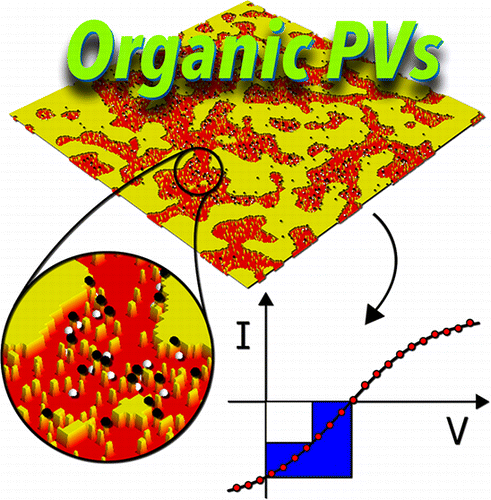Monte Carlo Simulations of Charge Transport in 2D Organic Photovoltaics
Adam G. Gagorik, Jacob W. Mohin, Tomasz Kowalewski, and Geoffrey R. Hutchison. “Monte Carlo Simulations of Charge Transport in 2D Organic Photovoltaics” J. Phys. Chem. Lett. 2013 4(1) 36-42. DOI. The supplemental info is available here: Gagorik SI.

A Monte Carlo charge hopping model with explicit Coulomb interactions was used to assess the effect of morphology on charge transport in idealized organic photovoltaics (OPVs). We find that increasing the average domain size from 6.3 nm to 18.3 nm improves the fill factor (device performance) by 11.6% in simulated isotropic two-phase morphologies. We attribute this to deconvolution of charge pathways and relaxation of Coulombic barriers with widening domains. Additionally, when small aggregates of electron acceptors are interdispersed into the electron donor phase, as found experimentally, charged defects form in the system, and reduce fill factors by 23.3% on average, compared to systems without aggregates. In contrast, systems with idealized connectivity (band morphologies) show a 3.31% decrease in fill factor when do- main size was increased from 4nm to 64nm. We attribute this to a decreased rate of exciton separation at donor-acceptor interfaces. Finally, we notice that the inclusion of Coulomb inter- actions in finite-size single-phase systems lead to an increase in predicted device performance. The results suggest that for commonly found isotropic morphologies, the Coulomb interactions between charge carriers dominates exciton separation effects.